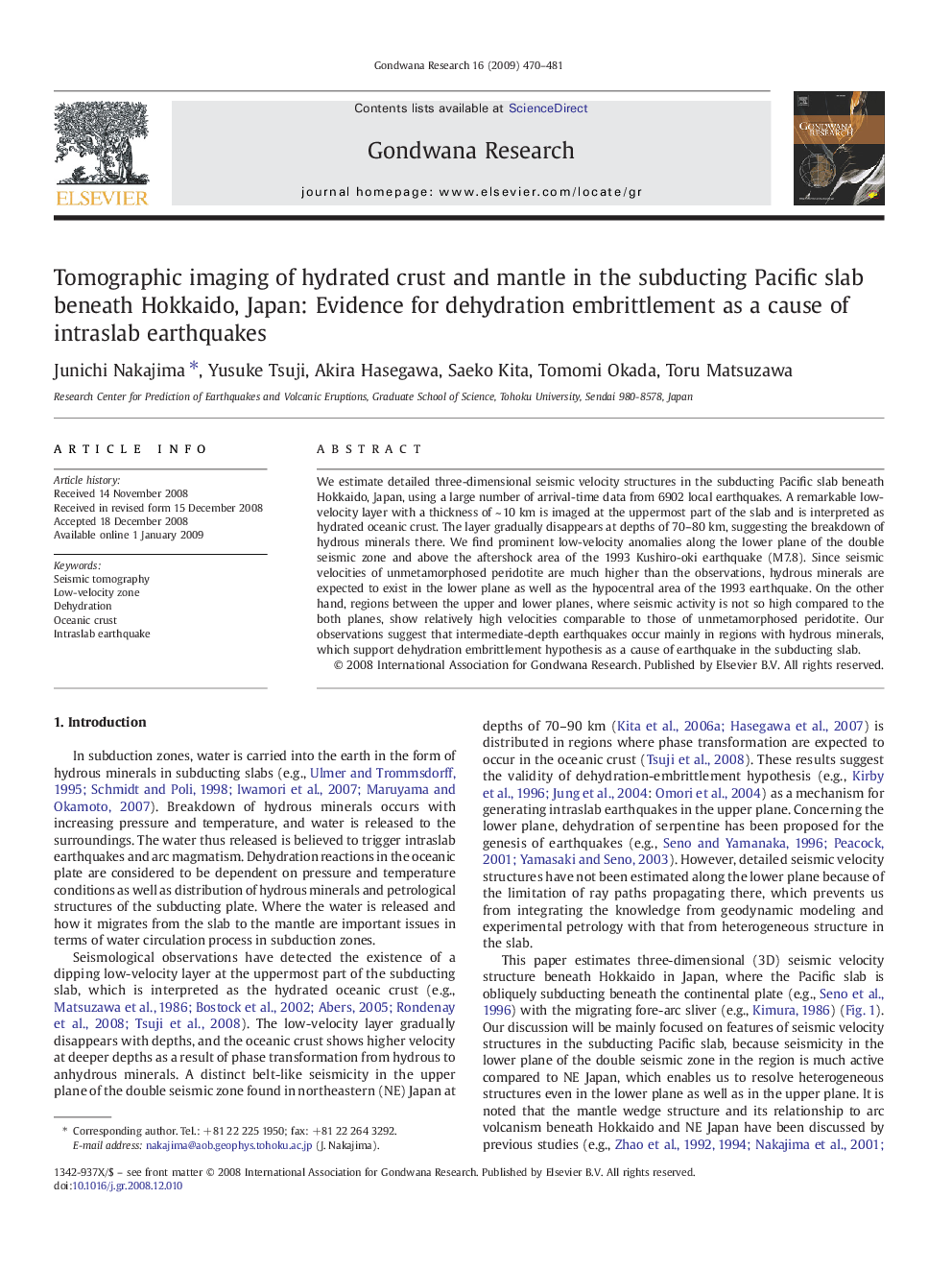| کد مقاله | کد نشریه | سال انتشار | مقاله انگلیسی | نسخه تمام متن |
|---|---|---|---|---|
| 4727506 | 1640150 | 2009 | 12 صفحه PDF | دانلود رایگان |

We estimate detailed three-dimensional seismic velocity structures in the subducting Pacific slab beneath Hokkaido, Japan, using a large number of arrival-time data from 6902 local earthquakes. A remarkable low-velocity layer with a thickness of ~ 10 km is imaged at the uppermost part of the slab and is interpreted as hydrated oceanic crust. The layer gradually disappears at depths of 70–80 km, suggesting the breakdown of hydrous minerals there. We find prominent low-velocity anomalies along the lower plane of the double seismic zone and above the aftershock area of the 1993 Kushiro-oki earthquake (M7.8). Since seismic velocities of unmetamorphosed peridotite are much higher than the observations, hydrous minerals are expected to exist in the lower plane as well as the hypocentral area of the 1993 earthquake. On the other hand, regions between the upper and lower planes, where seismic activity is not so high compared to the both planes, show relatively high velocities comparable to those of unmetamorphosed peridotite. Our observations suggest that intermediate-depth earthquakes occur mainly in regions with hydrous minerals, which support dehydration embrittlement hypothesis as a cause of earthquake in the subducting slab.
Journal: Gondwana Research - Volume 16, Issues 3–4, December 2009, Pages 470–481